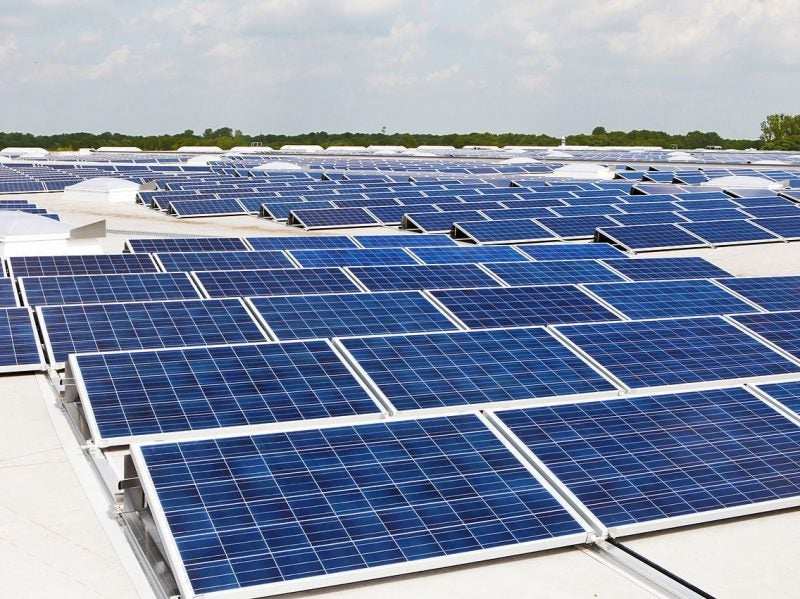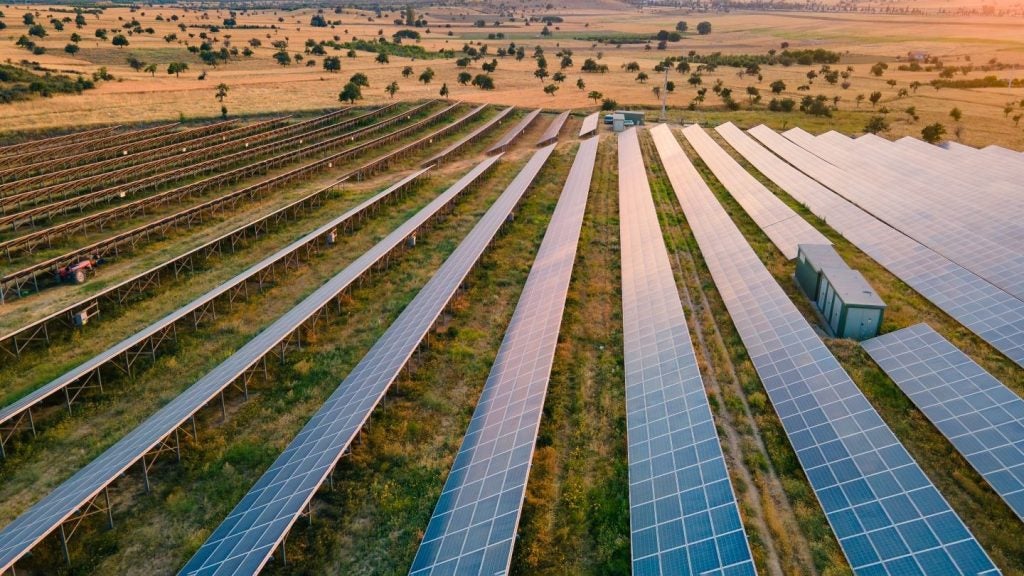
Crowdfunding platforms such as Kickstarter and Indiegogo have seen a surge in popularity in recent years, as entrepreneurs and innovators from a range of sectors look to appeal to would-be customers directly to fund their projects. The energy industry is no different, and new innovations in the renewables sector in particular have taken advantage of these networks to bring new clean energy projects to life outside of the traditional means of funding new technologies.
The result has been a mixed bag, with dramatic successes mirrored by significant failures, with the difficulty inherent in crowdfunding – that a project must convince a wide range of people of the project’s benefits – making it difficult to identify a clear pattern in this recent trade of clean energy crowdfunding. From large-scale portable batteries to new renewable networks and experimental wave power generators, what are some of the successes and failures in this sector, and what lessons can be learned for the future?
Allpowers’s Monsters smash crowdfunding goals
One of the most impressive companies is Allpowers, a firm founded in 2010 that rose to prominence with its Monster portable charger, which boasts a 372Wh battery. The company smashed its crowdfunding goal, raising $153,657 for the charger, well in excess of its modest $10,000 goal, and went on to make a number of improvements to the device, improving its battery capacity to 500Wh, and adding the capability for its power storage to be charged via solar panels.
Allpowers has built on this success further with its successor project, the Monster X, a massive 1,287Wh solar-powered charger, more than double the capacity of its predecessor, which has the capacity to charge an electric vehicle for seven and a half miles of travel. The huge device features four 2,000W wall outlets and can charge up to 11 devices at once, making it one of the more powerful and versatile renewable energy projects full stop, not just among those supported by crowdfunding.
The Monster X’s crowdfunding credentials remain impressive, having raised close to $1.5m, 14,800% of its funding target, and moved immediately to commercial production and distribution of its technology. This money has also come from over 1,400 individual backers, suggesting that the device has a broad base of support and significant demand across a range of people, and has resulted in a highly polished product that boasts a retail price of $1,299. The fact that the device was so comprehensively supported through crowdfunding, and is the latest in a long line of products to do so, suggests that large-scale, big-money projects can find success on this platform.
How well do you really know your competitors?
Access the most comprehensive Company Profiles on the market, powered by GlobalData. Save hours of research. Gain competitive edge.

Thank you!
Your download email will arrive shortly
Not ready to buy yet? Download a free sample
We are confident about the unique quality of our Company Profiles. However, we want you to make the most beneficial decision for your business, so we offer a free sample that you can download by submitting the below form
By GlobalDataGoSun builds a tradition of clean energy crowdfunding
Another impressive firm is GoSun, which has established a recent tradition of successfully funding renewable projects through crowdfunding. From the Go, a device to boil water and cook meals with energy from solar panels, to the Chill, a solar-powered cooler that requires no ice or outside maintenance, the company has raised over $2.6m in funding for seven different projects, and used this success to develop a number of solar-powered technologies.
While Allpowers’s approach has been to develop a single type of product through generations of refinements and reworkings, GoSun has taken a broader approach to its projects, and has created a more diverse portfolio of products. As a result, the company has demonstrated the efficacy of crowdfunding as a platform to fund tangible clean energy hardware across a range of sectors, from outdoor cooking to reusable utensils to its latest project: Flow, a water purification system.
The Flow is able to filter the impurities from a litre of water in one minute, and boasts replaceable parts that can be exchanged to extend the life of the device without having to buy a wholly new product. GoSun has also tried to make the Flow as versatile as possible, encouraging backers to use the Flow to purify water for drinking, sanitation, and just for storage. The project dramatically exceeded its funding target, raising over $386,000, enough for around 2,579% of its goal of $14,992, and this rampant success is perhaps the most impressive and instructive element of the project.
Citizenergy delivers a renewables investment network
One such investment platform is Citizenergy, an EU-backed initiative to collect renewable projects under one banner to encourage further investment, and foster bonds between the organisations involved. The platform functions similarly to more general crowdfunding sites such as Kickstarter and Indiegogo, but with a number of further incentives for renewable projects, such as an annual award for the most promising project, and support for 33 additional renewable power networks, similar in scope to itself, across the continent.
The project has already paid dividends, with Citizenergy-backed projects installing 1.2GW of power across 12 renewable energy projects in ten European countries since its inception in mid-2015. The project has also focused heavily on education and the establishment of links between individuals across the renewables sector, which target what the EU called “barriers to citizen engagement” that appeared during the project’s year-long pilot study. The project aims to develop an IT support service, in addition to what the EU calls a “practical handbook”, to offer advice for renewable start-ups, in order to better educate an estimated 15,000 people about the ins and outs of the project.
Citizenergy has also partnered with Energy Cities to deliver Solar Cities, a Europe-wide network to encourage a clean energy transition in the continent’s urban areas. The project, which received funding from the UN Development Programme in 2018, encourages mayors to sign up to a charter to pledge support for solar investment in their cities; while the project currently only has three signatories, from cities in Croatia, Georgia and Ukraine, the project is yet another example of the collaborative future that Citizenergy is aiming to deliver.
Hotel Magnetberg finds success despite regulatory uncertainty
Crowdfunding also has the potential to make a positive impact on established companies, with three-star Superior Hotel Magnetberg in Germany turning to renewable energy crowdfunding network Bettervest to fund a combined heat and power system to improve its energy efficiency. The project saw the construction of new power systems that fed residual heat from the hotel’s existing power generation infrastructure back into the energy system, reducing the hotel’s overall power demand, and cutting 96 tons of carbon dioxide emissions in the process.
However, the project also shone a light on a relatively underdeveloped regulatory framework in place for crowdfunding in the renewable sector, and as public-backed projects grow from small-scale energy efficiency devices to industrial-scale renewable power generators, this lack of regulatory coherence could prove to be a challenge. Crowdfundres, a European Commission project to develop crowdfunding infrastructure for the renewable power industry, published a report in 2018 that assessed the successes and failures of a number of European renewable projects backed by crowdfunding, over a three-year span.
While many of the report’s conclusions were positive, the authors noted that “a global regulatory treatment would greatly benefit the industry,” in reference to the Hotel Magnetberg example.
“In particular, across Europe, harmonised policies would lead to greater growth in the crowdfunding industry, the financing of more environmental friendly projects, and a greater engagement of citizens in the rollout of clean technology across Europe.”
KymoGen aims too high with wave energy generator
However, not all renewable energy projects are successfully funded, especially those that aim for large-scale developments. Not every project has achieved the success of Allpower’s Monster X, such as the KymoGen wave energy generator, an attempt to fund the construction of an 800-pound wave energy generator to be deployed off the Connecticut coast. While the crowdfunding project was not particularly ambitious, aiming for just $14,985, the combination of large-scale technology and the relatively untested nature of wave power, compared to renewable power sources such as wind and solar, may have contributed to the project’s ultimate inability to secure funding.
Indeed, the project convinced just 13 backers, suggesting a lack of broad support for the scheme and making the project stand in total contrast to the Monster X campaign. This inability to secure backers highlights the challenges inherent in relying on crowdfunding for financial support, where a developer must effectively convince a number of would-be backers again and again, as opposed to more traditional methods of crowdfunding where a large, single supporter can fund an entire project.
Figures from Kicktraq, which tracks the daily performance of a range of crowdfunded projects, show that the project went ten consecutive days during its funding period without attracting a single supporter, a microcosm of its struggles to generate broad support on a platform where audience engagement is vital.
Media coverage but little funding for Veiled Solar
Another project to have failed to reach its funding target is a wooden solar charger developed by Veiled Solar. The technology itself is impressive, a solar-powered battery with a capacity of 10,000 mAh that can be fully charged in 25 hours through a 5W solar panel. The battery can be used to fully charge a smartphone five times on a single charge, and can charge two devices at once, aiming for flexibility and versatility in its operations.
The project also received significant coverage in design publications, with both Designboom and Designwanted giving the technology glowing reviews in articles published during the product’s crowdfunding period. However, this coverage did not translate to actual funding, with the project receiving just $12,466, well short of its goal of $82,188. With just 87 backers, the project experienced many of the same challenges as the KymoGen wave energy project, and the eventual failure of the project to reach its goal serves as a cautionary tale for future renewable crowdfunding projects, namely that widespread support does not necessarily translate to tangible investment.







